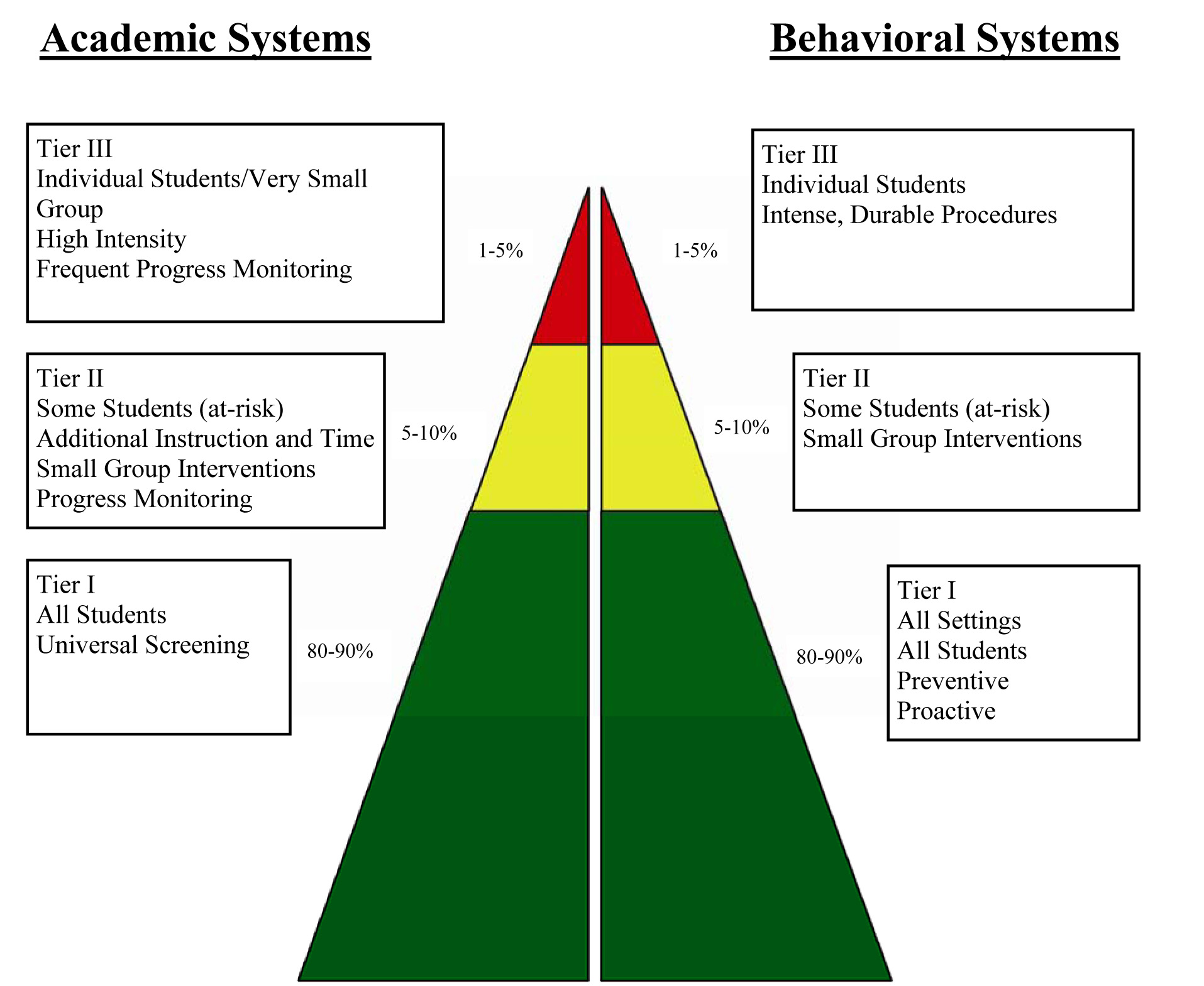Response to Intervention is a framework that:
- Provides high-quality, research-based instruction and intervention based on individual student need
- Uses assessment data to monitor student progress frequently in order to make decisions about how and what to teach children who are not making sufficient progress academically, social-emotionally or behaviorally
The key to RtI is simple: If we provide quality instruction, with all of our personnel supporting ALL children, and do this early, we will help our students to succeed.
Changes in federal and state laws (including the No Child Left Behind Act and the Individuals with Disabilities Education Improvement Act) have directed schools to focus more on helping all children learn by addressing individual needs earlier within the general education setting. These laws are designed to help schools focus on high-quality interventions using data for educational decisions, including the response to intervention for each student and special education eligibility for students suspected of having learning disabilities.
RtI creates an educational system that focuses on success for all learners. Teachers also accelerate students who are ready to advance their knowledge.
The RtI process is divided into three tiers of intervention.
Tier I
In Tier I, all students receive high-quality, scientifically based instruction, differentiated to meet their needs in the general education classroom. A Universal Screening tool identifies students who may be at-risk for academic difficulties. Measures of Academic Progress (MAP) is our screening tool for reading and mathematics in kindergarten through eighth grade.
Tier II
In Tier II, students not making adequate progress in the core curriculum are provided small-group, supplemental instruction in addition to the time allotted for core instruction. Tier II instruction includes instruction, strategies, and programs designed to supplement, enhance and support Tier I. Teachers monitor student progress frequently using multiple assessments, such as common assessments, curriculum-based measurement, running records, fluency and behavioral data.
Tier III
In Tier III students receive intensive, strategic, supplemental instruction specifically designed and customized to meet the student’s needs. Typically, this instruction, which targets the student’s skill deficits, is delivered in a small-group or 1:1 that is extended beyond the time for Tier I and Tier II. Progress is monitored even more frequently than in Tier II to determine the impact of the intervention on the student’s learning.

What are the Benefits of Response to Intervention?
Using the RtI framework, teachers intervene at the earliest indication of student need. School staff collaborate and problem-solve around defining the need, analyzing the need, developing and implementing a plan, setting progress monitoring schedules and evaluating the response to the intervention. Everyone — including the principal, classroom teacher, special education teacher, reading specialist, psychologist, social worker and others — all feel a shared responsibility for helping each child succeed.
What is the Role of the Parent?
Parents should participate in problem-solving discussions with their child’s teacher about the child’s specific strengths and areas of need. If your child is participating in a Tier II or Tier III intervention, ask school staff what academic, social-emotional or behavioral area is being worked on and how the child’s progress is being monitored.
Parents should also ask when the school will update them on the results of the intervention. When possible, parents should make suggestions about strategies and interventions based on what they know works at home. Finally, parents should praise their children for any improvement in the area of concern.